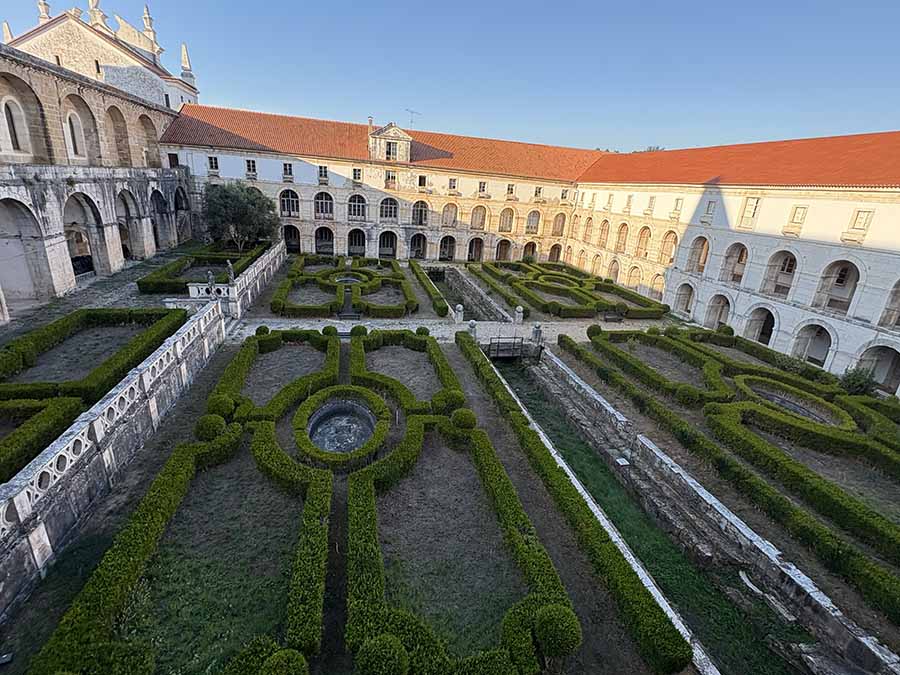
Guests arriving at the Montebelo Mosteiro de Alcobaça Historic Hotel step into a space where stone arches frame a welcoming reception area, complete with a polished marble desk and staff ready to offer directions or a quick tour of the grounds.
The lobby flows into the Rachadouro Cloister, where guests can settle into cushioned benches under open skies to read or chat, while a nearby terrace provides spots for afternoon tea overlooking the gardens. Those seeking relaxation find the spa straightforward to reach, with treatment rooms equipped for facials and body therapies, plus a sauna and Turkish bath that draw regulars back for unwinding sessions.
A stay here centres on comfort without fuss, as rooms and suites open to views of the cloister or the town below, each fitted with crisp linens, 55 inch flat-screen televisions, and safety deposit boxes for peace of mind.
The corridors are extremely wide. And you can see the evidence of the difficulty of turning such an ancient structure into a hotel with the way the bathroom units are constructed in pre-fabricated units, self contained and kept away from the precious ancient walls behind.
The rooms are neither monastically sparse (which would be atmospheric) nor lavishly decorated in a bid to keep that monastic feel. In our room, 135, under the bedroom window, the plaster has been stripped back to the original stonework. The air conditioning unit on the wall regulated temperature in summer while low stone black floor heaters provide the warmth required in winter, and the room numbers are on low illuminated panels to the left of each door.
In the corner there was an unusual round table with a wheel, bedside lockers on each side. Switching out the light was relatively simple. Elsewhere there were coffee making facilities are safe, two bathrobes and slippers., two deep drawers and an even larger drawer, a wardrobe with six coat hangers and a mirror on the back of the wardrobe door, the aforementioned air conditioning unit and a bedside telephone.
A low wooden table, on which to place luggage, was placed by the wall (one of our colleagues hurt herself stubbing it because it was placed at the end of the bed in her room. Another desk had a fridge beneath, containing some sparking water beer, fruit juice, still water and Coca-Cola and a Kit Kat.
AND then, a pleasant surprise. It is my custom not to ask for the room to be cleaned during my stay, and the nice cleaning staff, without a word of English, recited something in Portuguese and presented me with a €5 brochure to be used in the hotel. Apparently, this is the policy to promote sustainability.
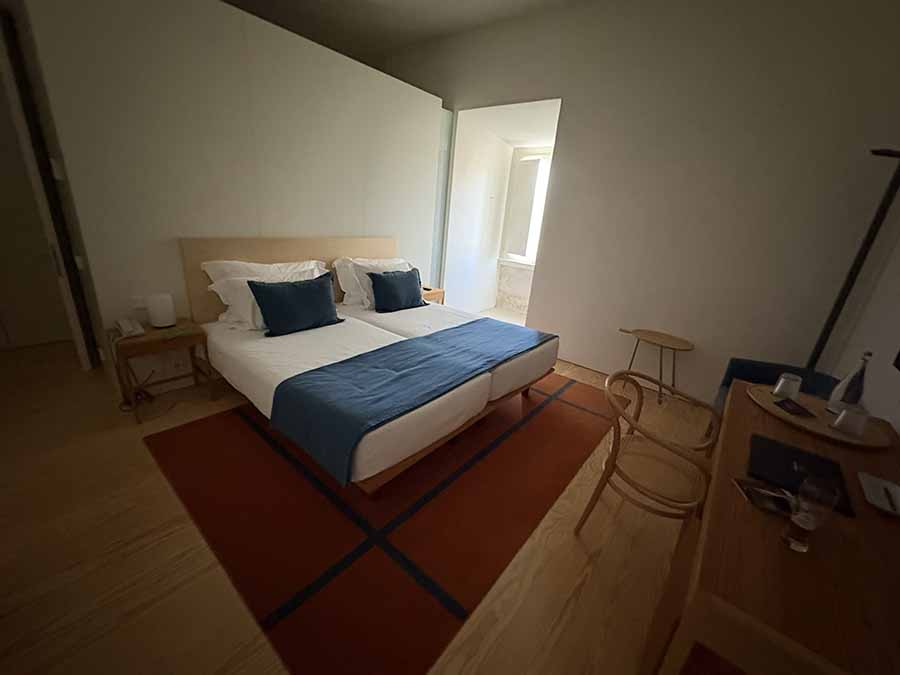
A day in Montebelo Mosteiro de Alcobaça
The complimentary breakfast buffet is laid out in Salon Ines, which was a considerable walk from our room adding to that wonderful cloistered effect (at least three full verses of Gregorian chant should you want to recreate the mood). The central table was laden with the main dining space with fresh pastries, fruits, and local cheeses, before heading out or lingering over coffee, served at a counter beside which are a choice of six or seven breakfast options including tomatoes (although not a coastal or southern town, this is a Mediterranean culture) mushroom, sausages, bacon and fired eggs, boiled eggs (served cold) or omelette.
Evenings bring a chance to join the daily manager’s reception in the lounge, where light snacks and drinks encourage easy conversations among travellers.
The overall rhythm suits those who appreciate quiet routines, from a morning swim in the heated indoor pool to an evening stroll through the outdoor gardens, all backed by room service that delivers promptly.
Standout elements include the reception area’s blend of historic stonework and modern lighting that keeps things bright yet calm, allowing guests to check in smoothly amid the hum of the cloister fountain.
Halfway through the lengthy wide corridors, there are rest areas with three panelled windows, door that open into a small balcony, and clusters of tables and chairs. which turned out to be convenient for a late night sing song.
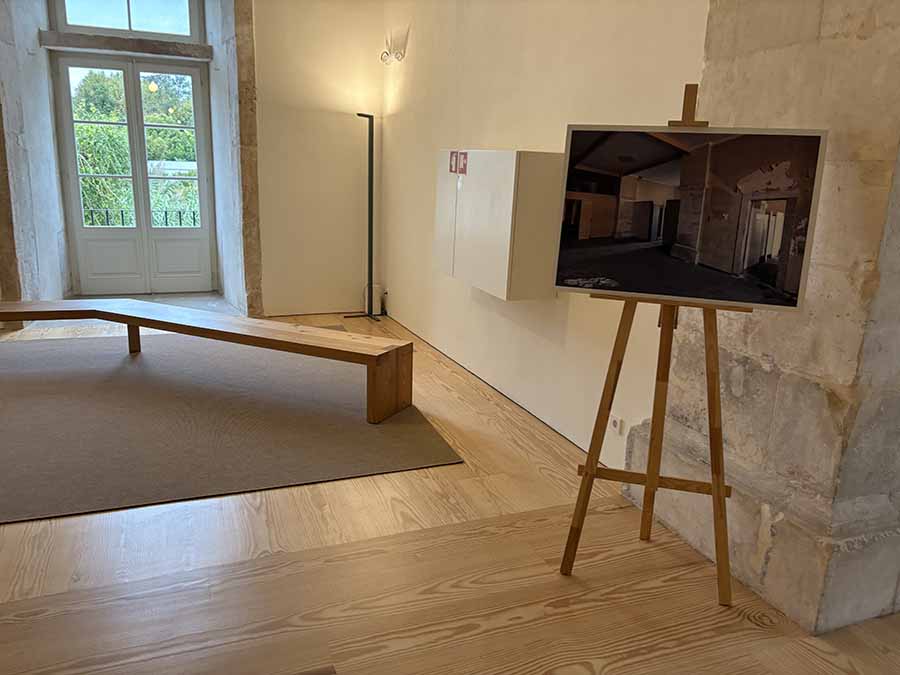
Courtyard
There are 18 lime trees in the courtyard area keeping away the impression of bare cloisters. Photographs on easels, placed strategically along the corridors, give an indication of the decayed state of the building before the restoration work. At the bottom of the east stairs, you will find a small gym, and an intriguing indoor pool with four colonnades in the middle of it, which means that swimming is exciting, but a little bit unstructured.
Dining takes place mainly at the hotel’s Portuguese cuisine restaurant, where menus feature regional dishes such as salted cod with chickpeas or roast suckling pig, alongside a vegetarian option of grilled vegetables and rice; the adjoining bar serves wines by the glass and simple cocktails in a nook off the lobby.
Entertainment unfolds casually through the spa’s wellness sessions or the poolside loungers that invite reading under shaded umbrellas, with the former library hall occasionally hosting small gatherings for talks on local history.
Accommodation shines in suites that add lounge seating and larger windows for better light, while hospitality touches like multilingual staff at the desk and complimentary transfers to nearby sites make settling in feel effortless.
The sun terrace stands out too, with its potted herbs and wicker chairs perfect for a pre-dinner aperitif, rounding out a day that balances exploration with downtime.
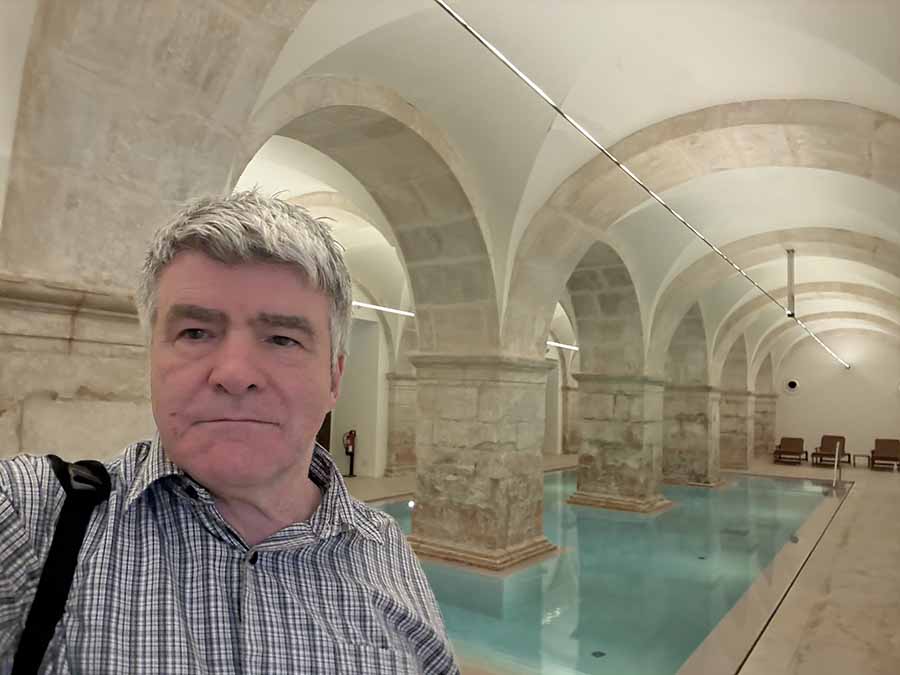
Surrounded by history
Montebelo Mosteiro de Alcobaça Historic Hotel occupies a portion of the Alcobaça Monastery, a Cistercian abbey founded in 1153 by King Afonso Henriques as a reward for Portuguese forces after their victory at the Battle of Ourique.
Construction of the monastery began that year and continued through the 13th century, with the church completed around 1222 in a stark Gothic style that reflects the order’s emphasis on simplicity.
Over the following centuries, the site expanded to include cloisters, dormitories, and communal halls, serving as a centre for monastic life until the dissolution of religious orders in Portugal in 1834 during the liberal reforms under Queen Maria II.
The buildings then passed into state hands, functioning briefly as a barracks before falling into partial disuse, though the monastery earned UNESCO World Heritage status in 1996 for its architectural and historical value.
The Rachadouro Cloister, where the hotel now stands, dates to the 18th century and originally housed the monks’ washing facilities, later adapted for storage and minor repairs amid broader conservation efforts by Portugal’s national monuments authority.
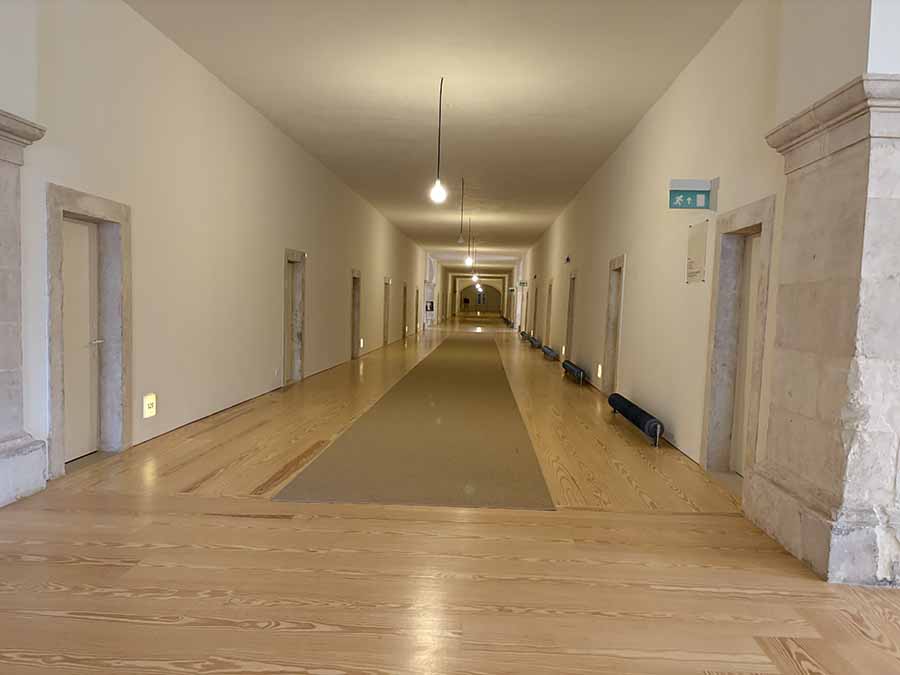
Restoration
Development of the hotel itself started in the late 2010s as part of a broader push to integrate underused monastic spaces into tourism infrastructure while preserving their fabric. Montebelo Hotels & Resorts, a chain focused on upscale properties blending heritage with contemporary design, secured a long-term concession from the Portuguese government to convert the Rachadouro Cloister and adjacent structures.
The project involved meticulous restoration work, including reinforcement of medieval stonework and installation of modern systems for heating, plumbing, and fire safety, all approved under strict heritage guidelines.
Pritzker Prize-winning architect Eduardo Souto de Moura led the redesign, drawing on the cloister’s arches and courtyards to create 31 rooms and suites across the first and second floors, with interiors that incorporate original beams alongside neutral palettes and custom furnishings.
This phased approach ensured minimal disruption to the site’s ongoing public access, with construction wrapping up ahead of the hotel’s soft opening in early 2024.
Investment in the venture totalled around €15m, funded primarily by Montebelo Hotels & Resorts through a mix of private equity and bank financing tailored to cultural tourism projects. The outlay covered not just structural adaptations but also outfitting the restaurant with professional kitchens and sourcing period-inspired lighting fixtures from local artisans. Additional grants from Portugal’s tourism development fund supported energy-efficient upgrades, such as solar panels on outlying roofs, aligning with national sustainability targets.
This capital injection reflects a calculated expansion for the chain, which operates six other properties in Portugal and Mozambique, aiming to capture the growing market for authentic historical stays amid a 12 per cent rise in central Portugal’s visitor numbers post-pandemic.

Montebelo management
Current management falls under Montebelo Hotels & Resorts, headquartered in Viseu and led by chief executive Paulo Pinto, who oversees operations across the portfolio with a focus on personalised service and revenue optimisation.
Day-to-day running at Alcobaça rests with general manager Ana Silva, appointed in 2024, who coordinates a team of 45 staff trained in both hospitality standards and heritage protocols to balance guest needs with site preservation.
The group maintains centralised booking systems and marketing through its website, while on-site decisions emphasise seasonal programming, such as guided cloister tours in collaboration with the monastery’s curators. This structure allows for agile responses to occupancy trends, with the hotel achieving 75 per cent average rates in its first full year through targeted promotions on web platforms.
The former library hall was transformed into a multipurpose event space for up to 500 guests, served as a venue for the 2025 conference of the Irish Travel Agents Association. It has fantastic acoustics, tested by João Quaresma, MICE Marketing and Project Manager for Centro de Portugal tourism when he played a love song to the delegates, and a balcony for any wannabe Ineses.
Overall, a comfortable stay with history becknonig at every turn. Enough to generate a Te deum or two of joy.



